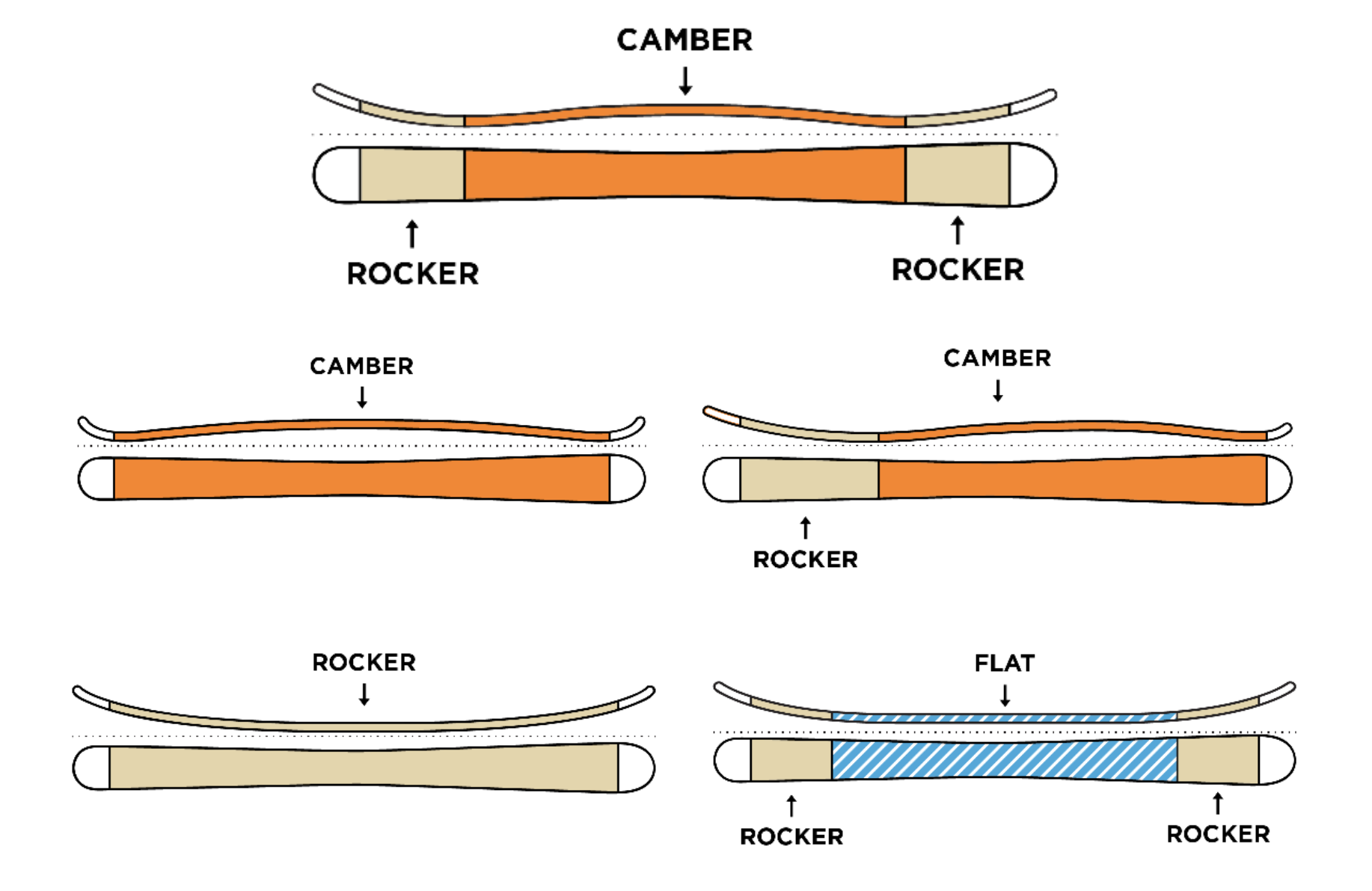
Ski Size Guide and Chart

Quick Ski Sizing:
- Beginner Skier = Ski should be around chin height
- Intermediate Skier = Ski should be around eye level
- Advanced Skier = Ski should be near the top of your head
Your skis should be sized correctly to help you enjoy your time on the mountain as much as possible! Skis are generally sized based on your overall height, but there are also a few other factors that need to be taken into account, including your skill level (i.e more advanced skiers might want longer skis for better floatation in powder and more stability at higher speeds), skiing style (i.e. if you like to ski slowly or like skiing in the trees, then shorter is better), as well as your weight.
When to Size Up or Size Down Your Skis:
Choosing between a shorter or longer ski within your recommended size range depends on several factors. A shorter ski is easier to turn but less stable than a longer one. Carving skis with a narrower waist and smaller turn radius can be used at a shorter length compared to all-mountain or freeride skis with a wider waist and larger turn radius. Rockered skis, which pivot more easily between turns, can be skied slightly longer than comparable camber skis.
Below is a sizing chart that will give you a good starting point for selecting the correct ski size:
|
SKIER HEIGHT |
SKI LENGTH (CM) |
|||
|
FT / IN |
CM |
BEGINNER |
INTERMEDIATE |
EXPERT |
|
4'4" |
132 |
120 |
130 |
138 |
|
4'6" |
137 |
125 |
135 |
143 |
|
4'8" |
142 |
130 |
140 |
148 |
|
4'10" |
147 |
135 |
145 |
153 |
|
5' |
152 |
140 |
150 |
158 |
|
5'2" |
158 |
145 |
155 |
163 |
|
5'4" |
163 |
150 |
160 |
168 |
|
5'6" |
168 |
155 |
165 |
173 |
|
5'8" |
173 |
160 |
170 |
178 |
|
5'10" |
178 |
165 |
175 |
183 |
|
6' |
183 |
170 |
180 |
188 |
|
6'2" |
188 |
175 |
185 |
190+ |
|
6'4" |
193 |
180 |
190 |
190+ |

Reasons to Choose Shorter Skis (closer to your chin):
- You are a beginner or intermediate skier.
- You weigh less than average for your height.
- You prefer making short, quick turns and do not ski fast.
- You want a carving ski with only camber and no rocker.
Reasons to Choose Longer Skis (closer to the top of your head):
- You ski fast and aggressively.
- You weigh more than average for your height.
- You plan to ski mostly off-trail.
- You want to ski on twin-tip skis.
- You prefer skis with a lot of rocker.
Note:
- Different ski brands may measure length differently, so a ski size from one brand may be slightly longer or shorter than the same size from another brand.

What about width and turning radius?
Most all skis will have series of numbers printed on them that lets you know what the tip, waist, and tail width measurements are in millimeters. It will look something like this: 130/90/120, which gives you the tip/waist/tail measurement. The most important number of that measurement for most skiers is the waist measurement (also referred to as "underfoot"). Many ski manufacturers will even include the waist measurement in the name of their ski, such as Blizzard Brahma 88, which means the ski has a waist measurement of 88 millimeters. Wider waist measurement means that the ski will float better in powder and handle choppy snow conditions a bit more easily. Narrow skis have better edge-to-edge turning (easier for beginners to learn turning!), and they also tend to perform better in icy/hard pack snow conditions.
The industry categorizes skis based on what they do well, and below is an explanation of the different types of ski terms that you might hear:
- All-Mountain Skis: This is a ski that "does it all", so it typically has a waist width of 80 millimeters to 105 millimeters. The shape and design of the ski allows it be used most anywhere and performs respectably regardless of where you take it, whether it be on a groomed run or into the trees on a powder day.
- Carving or Front Side Skis: This is the most common type of ski that you'll see when you rent gear. These skis are best for beginners to learn on because you can maneuver them rather easily.
|
Turning Radius |
Turn Type |
Type of Skiing and Skier Ability |
|
< 16m |
Short |
Carving Skis and All-Mountain/Powder Skis with Tapered Tips and Tails |
|
17-22m |
Medium |
All-Mountain Skis, Park & Pipe Skis |
|
>22m |
Long |
Powder & Big-Mountain Skis |
Sizing for Kids Skis: It's always going to be better to start your child off on shorter skis when they are first learning. Shorter skis are much easier to maneuver and they weigh less, so for starting out, always select the shorter length option! As their ski ability improves, then you can look to put them on a bit longer ski, especially if you want a ski that they can keep for a few years and grow into. Don't forget that we offer a no-cost Junior Trade Up Program so that you can keep your kids in gear that fits well each season!
